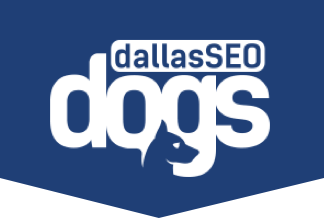Effective Marketing Strategies For Startups

Starting a new business is an exciting time, but it can also be overwhelming. There are so many things to think about, from product development to sales to marketing. But don’t worry, we’re here to help. In this blog post, we’ll give you a comprehensive overview of the marketing strategies that are most effective for new businesses. We’ll also explain how to develop a brand and how to set up a digital presence online.
What is a Marketing Strategy?
A marketing strategy is a plan of action designed to promote and sell a product or service. It involves identifying your target audience, understanding their needs and wants, and then developing a plan to reach them with your marketing message.
Why is a Marketing Strategy Important for Startups?
A strong digital marketing strategy is essential for any startup. With the right approach, digital marketing can increase brand visibility, and reach your target audience. It plays a key role in generating leads, driving sales, fostering customer loyalty, and establishing a leadership position in the industry.
Digital marketing strengthens customer loyalty by engaging your audience through valuable content, personalized communications, and consistent interaction across platforms. By establishing your brand’s voice through social media, blogs, or other targeted ads, your startup can position itself as credible and is the foundation for long-term success.
How to Develop a Marketing Strategy
Developing a marketing strategy can seem like a daunting task, but it doesn’t have to be. Here are a few simple steps to get you started:
Identify Your Target Audience
Who are you trying to reach with your marketing message? What are their needs and wants?
Set Marketing Goals
What do you want to achieve with your marketing efforts? Do you want to increase brand awareness, generate leads, or drive sales?
Develop A Marketing Budget
How much can you afford to spend on marketing?
Choose Marketing Channels
Where will you reach your target audience? Will you use online channels like social media and search engine optimization (SEO) or offline channels like print advertising and public relations?
Create Your Marketing Message
What do you want to say to your target audience? What makes your product or service unique?
Track Results and Adjust
It’s important to track your marketing results so you can see what’s working and what’s not. Make adjustments to your marketing strategy as needed.
How to Develop a Brand
In today’s competitive market, a strong brand is more than just a recognizable logo and catchy name. It’s the essence of your company, encompassing its personality, values, and the overall experience it delivers to customers. A well-crafted brand can be a powerful tool for attracting new customers, fostering loyalty, and standing out from the crowd.
This blog post delves into the key elements of building a strong brand, providing actionable insights and strategies to help you create a brand that truly resonates with your target audience.
1. Craft a Memorable Name and Logo
Your name and logo are the visual cornerstones of your brand. They’re often the first point of contact customers have with your company, making a lasting impression. Key Considerations for Choosing a Name
- Relevance: Does the name reflect your company’s mission, values, or offerings?
- Memorability: Is the name easy to recall and pronounce?
- Uniqueness: Does the name stand out from competitors and avoid confusion?
- Availability: Is the name available as a domain name and trademark?
Key Considerations for Logo Design
- Simplicity. Is the logo clean, uncluttered, and easily recognizable?
- Versatility. Does the logo work well in different sizes and formats (e.g., website, social media, print)?
- Color Palette. Do the colors evoke the desired emotions and align with your brand personality?
- Timelessness. Will the logo still be relevant and appealing in years to come?
Brand Examples
- Apple: The simple, iconic Apple logo is instantly recognizable and conveys a sense of innovation and sophistication.
- Nike: The “Swoosh” logo is dynamic and energetic, reflecting the brand’s association with athleticism and achievement.
- Google: The colorful, playful logo reflects the company’s diverse offerings and approachable personality.
2. Develop a Distinctive Brand Voice
Your brand voice is how you communicate with your audience. It’s the personality and tone that comes through in your written and spoken communications. Defining Your Brand Voice
- Formal or Informal? Do you use professional language or a more casual, conversational tone?
- Serious or Playful? Is your communication straightforward and informative, or do you incorporate humor and lightheartedness?
- Authoritative or Friendly? Do you position yourself as an expert in your field, or do you emphasize approachability and empathy?
Consistency is Key! Maintaining a consistent brand voice across all channels, including your website, social media marketing strategy, marketing materials, and customer service interactions, helps to build a strong and recognizable brand identity.
Brand Voice Examples
- Mailchimp: The company’s brand voice is friendly, helpful and slightly quirky, reflecting its mission to make marketing accessible to everyone.
- Dove: The brand’s voice is empowering and inclusive, promoting body positivity and self-acceptance.
- Harley-Davidson: The brand’s voice is rugged, rebellious and adventurous, appealing to its target audience of motorcycle enthusiasts.
3. Craft a Compelling Brand Story
Your brand story is the narrative that connects your company to your customers on an emotional level. It explains your origins, your mission, and what makes you unique. Elements of a Strong Brand Story include:
- Authenticity: Is your story genuine and believable?
- Relatability: Does your story resonate with your target audience’s values and aspirations?
- Emotion: Does your story evoke feelings and create a connection with your audience?
- Purpose: Does your story communicate your company’s mission and reason for being?
Sharing Your Brand Story, Incorporate your brand story into your website’s “About Us” page, social media profiles, marketing materials, and customer interactions.
Brand Story Examples
- TOMS Shoes: The company’s story of giving a pair of shoes to a child in need for every pair purchased resonates with customers who value social responsibility.
- Airbnb: The story of how the founders rented out air mattresses in their apartment to make ends meet connects with travelers seeking authentic and affordable experiences.
- Patagonia: The brand’s story of environmental activism and sustainable practices appeals to customers who share those values.
4. Maintain Brand Consistency
Consistency is crucial for building a strong brand, making sure your customers have a cohesive experience with your company across all touchpoints.
- Visual Identity. Use your logo, color palette, and typography consistently across all materials.
- Messaging. Ensure your brand voice and story are reflected in all communications.
- Customer Experience. Provide a consistent level of service and support across all channels.
- Brand Guidelines: Create a document that outlines your brand’s visual identity, messaging, and values.
- Style Guides: Develop guidelines for writing and formatting content to ensure consistency.
- Templates: Use templates for marketing materials and communications to maintain a consistent look and feel.
How to Set Up a Digital Presence
In today’s digital world, it’s essential for businesses to have a strong online presence. This means having a website, social media accounts, and a blog. Here are a few tips for setting up a digital presence:
Create A Website
Your website is your online home. Make sure it’s well-designed and easy to navigate.
Start A Blog
A blog is a great way to share your expertise and connect with potential customers.
Use Social Media
Social media is a powerful tool for reaching your target audience.
Utilize SEO
SEO can help your website rank higher in search results.
Let Dallas SEO Dogs Get You on Your Way
Dallas SEO Dogs is a premier marketing and digital development company with experts in PPC marketing strategy, SEO marketing strategy and making content that will get — and keep — eyes on your site. Contact us today for more information and let’s see how we can build your business together.
FAQ: Effective Marketing Strategies for Startups
Q: What are the most effective marketing strategies for startups?
A: The most effective marketing strategies for startups vary depending on the industry, target audience, and budget. However, some common approaches include content marketing strategy, social media marketing, search engine optimization (SEO), and paid advertising.
Q: How can I develop a strong brand for my startup?
A: Developing a strong brand involves creating a unique brand identity, crafting a compelling brand story, and consistently communicating your brand message across all channels.
Q: How can I set up a digital presence for my startup?
A: Setting up a digital presence involves creating a website, establishing social media accounts, and engaging in online marketing activities such as SEO and content marketing.
Q: How can I measure the success of my marketing efforts?
A: The success of your marketing efforts can be measured by tracking key metrics such as website traffic, lead generation, and sales conversion rates.
